Speedo Winter Jr. Nationals vs 2016 Division I NCAA’s
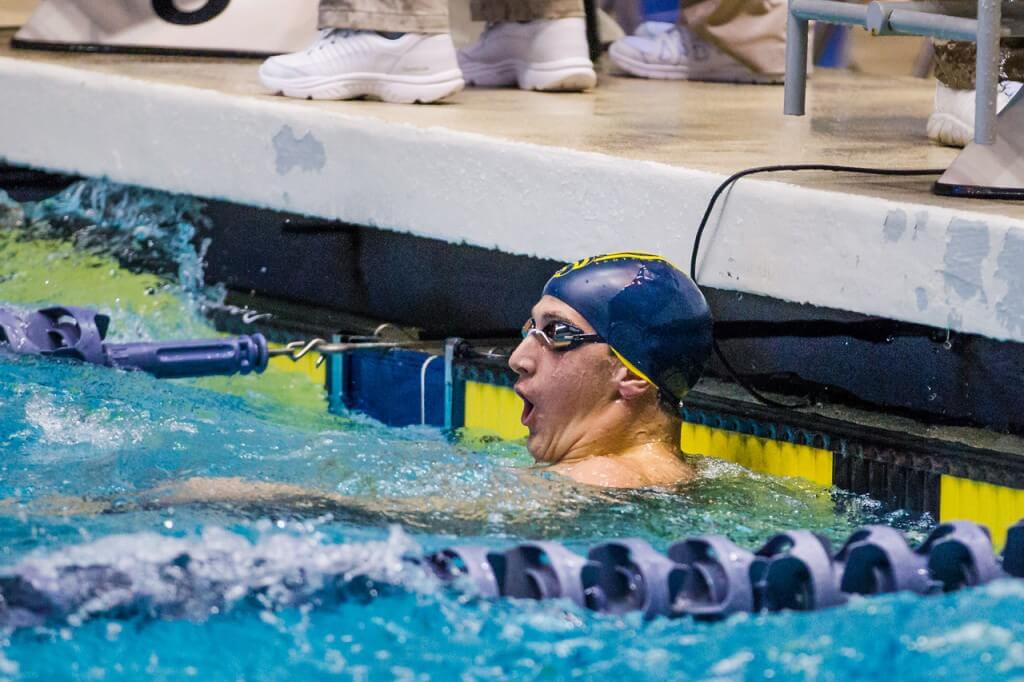
By Benny Liang, Swimming World College Intern.
After seeing the results of this year’s Winter Jr. Nationals, I think it can be agreed that there is some serious talent developing at the prep level. For each event at the 2016 NCAA Division I Championships, there was at least one swimmer from Winter Jrs. that could have scored except in the men’s 400 IM and 200 fly and the women’s mile. In fact, on the women’s side there were eight events and on the men’s side six in which a junior swimmer would have scored in the A final.
This table shows the times that placed eighth and sixteenth in each individual event at the 2016 NCAA Championships. Columns that say “Jr. Nationals” show the number of swimmers from Winter Jrs. that swam faster than an eighth or sixteenth place time. For example, if two swimmers would have placed in the A final and one in the B final, the table would be 2/1.
| Women | Men | |||||
|---|---|---|---|---|---|---|
| Event | 8th Place | 16th Place | Jr. Nationals | 8th Place | 16th Place | Jr. Nationals |
| 500 Free | 4:38.44 | 4:41.21 | 2/1 | 4:16.92 | 4:19.27 | 1/2 |
| 200 IM | 1:56.16 | 1:57.05 | 2/1 | 1:42.77 | 1:46.08 | 0/4 |
| 50 Free | 22.02 | 22.45 | 0/6 | 19.23 | 19.74 | 2/0 |
| 400 IM | 4:08.69 | 4:08.78 | 1/0 | 3:43.28 | 3:43.95 | 0/0 |
| 100 Fly | 51.68 | 52.81 | 0/5 | 46.26 | 46.45 | 1/0 |
| 200 Free | 1:44.75 | 1:45.63 | 2/2 | 1:33.24 | 1:34.77 | 0/3 |
| 100 Breast | 59.20 | 1:00.55 | 2/2 | 52.51 | 54.43 | 0/5 |
| 100 Back | 51.86 | 52.33 | 1/1 | 46.70 | 46.44 | 1/0 |
| Mile | 16:00.64 | 16:06.98 | 0/0 | 14:48.03 | 14:52.77 | 0/1 |
| 200 Back | 1:51.20 | 1:52.94 | 1/0 | 1:40.22 | 1:43.36 | 0/2 |
| 100 Free | 47.72 | 48.91 | 0/6 | 42.65 | 43.18 | 1/1 |
| 200 Breast | 2:10.42 | 2:10.45 | 5/0 | 1:54.56 | 1:56.00 | 1/1 |
| 200 Fly | 1:54.84 | 1:57.43 | 1/6 | 1:42.06 | 1:43.85 | 0/0 |
Notable Swimmers
Brooke Forde
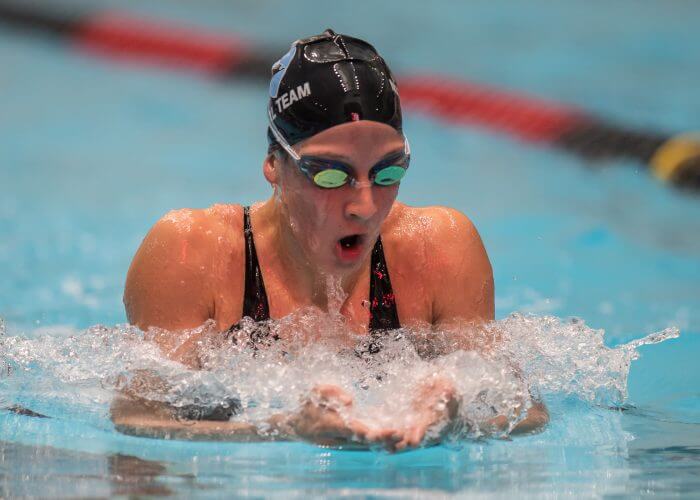
Photo Courtesy: Peter H. Bick
Stanford commit Brooke Forde is a triple threat with A-final potential in both of the individual medleys along with the 200 breast. Though her 200 IM and breaststroke would have taken fifth and eighth at the 2016 NCAA’s, Forde’s 400 IM is what really makes her stand out. Her time of 4:02.51 would have earned her second behind future teammate Ella Eastin. That duo, combined with (possibly) Katie Ledecky and Allie Szekely will give Stanford the best IM group in the country.
Regan Smith
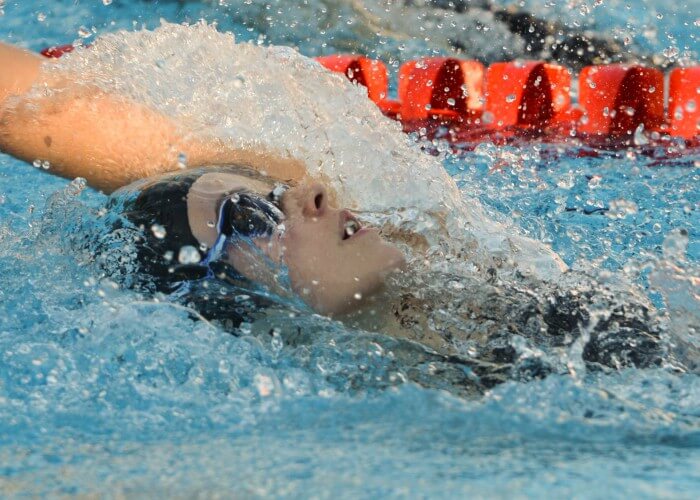
Photo Courtesy: Donna Nelson
She isn’t old enough to drive a car, but she is fast enough not to need one. 14-year-old Regan Smith of Riptide Swim Team is already one of the country’s best backstrokers. Her times in the 100 (51.09) and 200 (1:51.79) backstrokes would currently stand as the fifth and eighth fastest times this season. Smith also swam a slick 1:56.69 in the 200 IM which would have put her solidly in the B-final of that race.
Alex Walsh
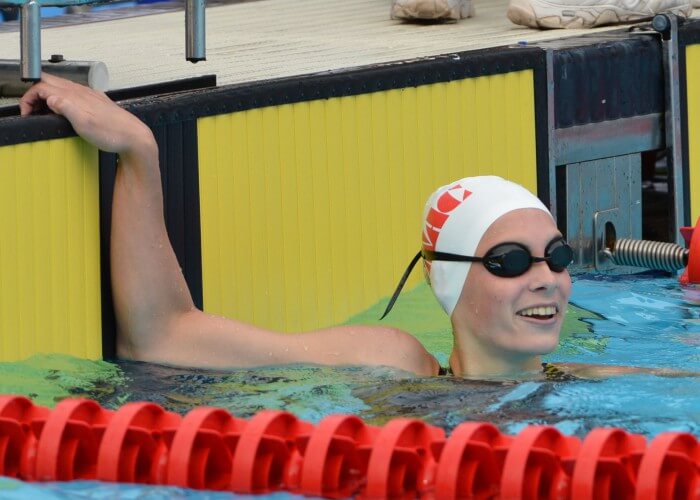
Photo Courtesy: Donna Nelson
Walsh is another swimmer who has been redefining expectations for age group swimmers. At 15 years of age, her 200 IM (1:54.48) would have taken fourth at NCAA’s and her 100 back (52.32), which isn’t quite on the same level as her IM, is still good enough for a B-final appearance. Walsh also represents one of two 15-16 swimmers to crack 59 seconds in the 100 breast. Her time of 58.80 would have taken a narrow seventh at NCAAs behind Louisville senior Andrea Cottrell.
Reece Whitley
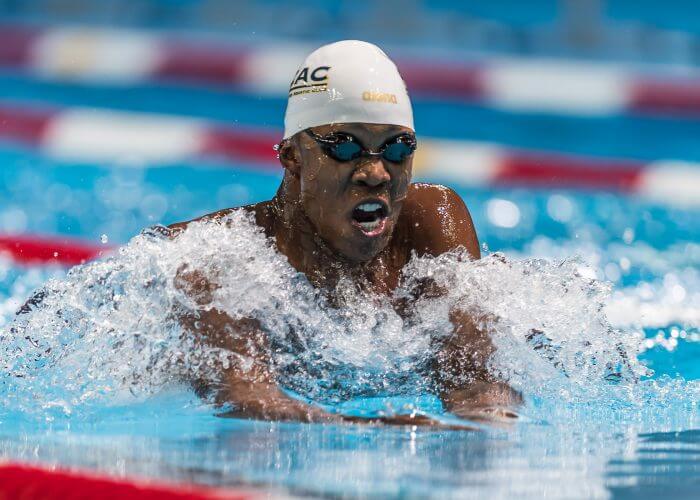
Photo Courtesy: Peter H. Bick
The 2015 Sports Illustrated Sportskid of the year is one to look out for in the years to come. At just 16 years of age, Reece Whitley stands 6’8″. His 100 breast time (52.95) would have snuck into the B final along with his 200 IM (1:43.93). While his individual medleys and 100 breast are nothing to sneeze at, Whitley’s true talent lies in the 200 breast. His time of 1:52.37 ranks third in the country only behind American Record-holder Will Licon and Division III powerhouse Andrew Wilson.
Ryan Hoffer
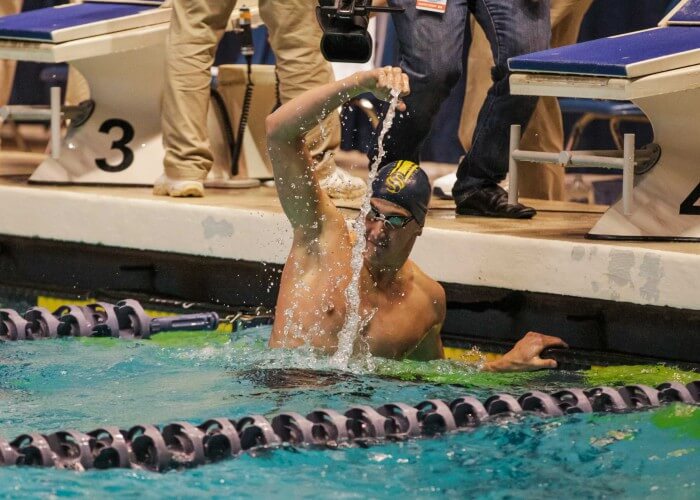
Photo Courtesy: Melissa Lundie
There’s not much to say about Hoffer than hasn’t already been said. His 50 free (18.71) is only surpassed by Caeleb Dressel for the 17-18 age group and also would have taken second behind Dressel at the 2016 NCAA’s. Hoffers best time in the 100 free (41.23) would have added another top-three finish. He won’t touch down in California, where he has elected to swim under Dave Durden, until the fall of 2017. When he does though, he will have to face off against Dressel in the sprint freestyles, and possibly the 100 fly. However, with the graduation of backstroke stud Ryan Murphy, Hoffer may consider backstroke duty and swim the 100 back instead of the fly.
All commentaries are the opinion of the author and do not necessarily reflect the views of Swimming World Magazine nor its staff.




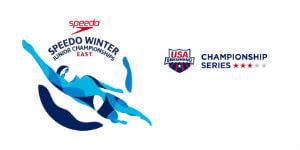
I’ve been thinking about this also. I feel that maybe we are over training our age groupers. The college swimmers should be faster.
Curious if you could expand on that thought. Are you thinking that these kids are peaking to soon and won’t be as fast when they reach college age?
Obviously I’m new to the swimming world, but from general sports perspective, could it also be that swimming is becoming more popular and is now attracting better athletes than it did even a few years ago and that in a couple years, college times will be crazy fast?
John A Sahl most of those kids are doing a few mornings a week before school, putting them up to 9/10 practices a week. While it is awesome to be nationally ranked, is it not wrong that age groupers are practicing more then NCAA even allows. I guess I’m saying, maybe they are too young for it. I would love Delaney Walz to weigh in on this.
Sari Puzio Carroll Definitely good points – this isn’t just a swimming thing – all sports are this way anymore. parents get the feel that their child has no shot at success if they don’t turn their family life completely upside down and dump a million dollars into getting their kid trained.
In the end, you risk missing your child’s childhood and tossing a bunch of money out the window when they quit the sport from burnout
Not sure if you are familiar with http://changingthegameproject.com/
Why wait until College to train hard and be fast? Are these kids supposed to slow down so the college swimmers can be better? Many age group swimmers will not be competitive (or even compete for that matter) at the collegiate and international level, so what’s wrong with trying to achieve the highest level possible prior to college, particularly if the kids enjoy the training and competition ? Imagine if Phelps, Ledecky, Janet Evans, Mary T …had your sentiment? All were gold medalists as teenagers. Kids are doing doubles to prep for the college workload in order not to burn out in college and get accustomed to the environment.
And that’s why I insist am doing things differently and do not adhere to an attendance policy. At Brigantine Greenheads we are trying to create athletes that love the sport and can still be children. Maybe just maybe some of them will peak in college!! Hoping my plan works!
This comparison is fundamentally inaccurate because it uses finals times. In the 100 breast, for example, it actually took a 52.7 to score, which no one at junior nationals did. in reality none of the times swum at juniors in the 100 breast would even qualify for NCAAs and the 16th place time used was just one exceptionally off or tired swim by a console finalist that was in some cases well past their taper. Come on, let’s try and actually think about this for a minute and see if these numbers pass the eye test. Many of the 16th place times weren’t even top 50 NCAA times last year.